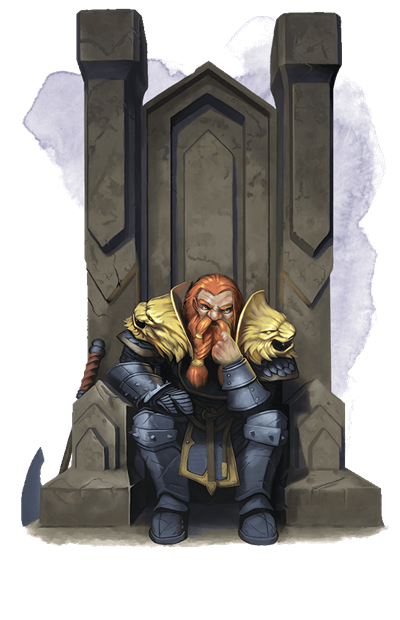 You’re the Dungeon Master. The party has just broken a death curse causing some of the world's most powerful people to wither into dust. Or you’ve just liberated a great city from frost giant control, saving thousands of innocents from oppression. Or perhaps you’ve just smote Tiamat back into Avernus and shattered her vile cult. The dust settles, and the world is saved. After weeks, months, maybe even years of adventure, the land is now at peace.
You’re the Dungeon Master. The party has just broken a death curse causing some of the world's most powerful people to wither into dust. Or you’ve just liberated a great city from frost giant control, saving thousands of innocents from oppression. Or perhaps you’ve just smote Tiamat back into Avernus and shattered her vile cult. The dust settles, and the world is saved. After weeks, months, maybe even years of adventure, the land is now at peace.
And then the campaign ends. Or worse, the characters simply go back to town to a largely indifferent populace, and hang around until the next villain shows up and a new campaign begins. Maybe they decide to take a trip to Undermountain and tackle those last few levels so they can cap off at 20th level and then move on and play a different game.
What a letdown! Even if your story had a thrilling climax, all the action was for nothing if there isn’t a satisfying conclusion. In D&D, the falling action at a story’s end—literary scholars call it a dénouement, in which all the lingering story threads are unraveled—allows us to celebrate and feel rewarded after overcoming amazing challenges. So what do you need to make your players feel like heroes when a campaign ends? In a sentence, it comes from being recognized and rewarded by others for overcoming the adventure’s many challenges. Let’s unpack that.
Recognition
The first step of being hailed as a hero is having other people know about your heroic deeds. If a player character has rallied an army, met with a powerful queen, or perhaps just loudly announced their presence and bribed bards to sing about them, they may start to gain a reputation. People will know about them. In the ending of Rise of Tiamat—spoiler alert—the player characters have the chance to rally an army made up of the free people of the Sword Coast, plus giants and metallic dragons, to fight Tiamat and the Cult of the Dragon.
The entire adventure was spent dealing with the emergency Council of Waterdeep, and it ended with them fighting alongside the people of the Realms. There’s no way the player characters got out of that adventure without a reputation unless they took great pains to avoid it. A skilled Dungeon Master could even build up to a heroic finale by giving the characters mini-finales after every episode, as the people their actions saved adulate their heroism.
In other adventures, such as Tomb of Annihilation—spoiler alert—the characters’ deeds are no less widespread, but fewer people will know of their success. Just about every powerful humanoid being in the Realms was affected by Acererak’s death curse, but the characters spent the entire adventure in a jungle wilderness. The closest city is Port Nyanzaru, but they probably haven’t been there since they were 3rd level or so. How would anyone know of their deeds? If you want to give the players a huge celebration, you may have to have an NPC play the role of Aragorn in Return of the King, telling the people of the world of the characters’ great deeds.
Speaking of Return of the King…
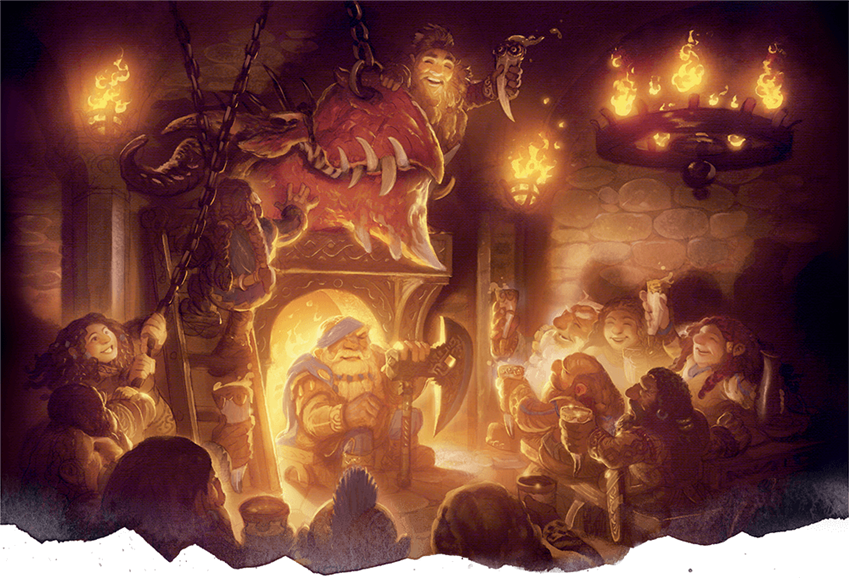
A Worthy Reward
D&D is all about a loop of exploration, challenges, and rewards, but there’s one tiny wrinkle that the end of a campaign brings: treasure and magic items don’t cut it when the game is about to end! “You can’t take it with you,” so to speak, when you go back to the real world. What will linger with your players after they step away from the gaming table, however, is the sense of accomplishment of their victory and the feelings of heroism your NPCs lavish upon them.
Peter Jackson’s adaptation of Return of the King famously has six distinct endings. Spoilers for an over fifteen-year-old movie. First, in which the Fellowship is reunited, safe and sound, in Rivendell. Then, when Aragorn is crowned King of Gondor and honors the hobbits for their heroism. Third, the hobbits’ return to the Shire, wearing the garb of heroic adventurers and reveling in their newfound status. Fourth when Frodo finishes his memoirs and dwells upon his lingering wound from the Witch-King’s Morgul-blade. Fifth, in which Frodo, Bilbo, Gandalf, and the elves depart for the Undying Lands, leaving the world of Middle Earth behind. And finally, when Samwise returns to his loving family in the Shire to live a normal life.
I want to pay special attention to the second and third endings as an exceptional way to end a D&D campaign, but each and every one of these endings could be a satisfactory conclusion for a campaign, or even for an adventure, if the stakes are high enough. (Though DM of the Rings famously lampooned Aragorn’s coronation snubbing Legolas and Gimli’s “players.”) The first ending shows the physical safety of the surviving members of the Fellowship. In a campaign fraught with peril, injury, and danger, such as Tomb of Annihilation, simply allowing the survivors to reunite and breathe a sigh of relief might be a satisfactory ending. But most D&D players want more external rewards. Fame, wealth, glory, and all that.
The second ending delivers that in spades, but also in a way that pays tribute to one “player’s” character concept. Throughout the “campaign” that is Lord of the Rings, Aragorn has struggled with his identity as rightful king. His reward is the realization of this goal, and all the glory that accompanies it. All of the characters are rightfully celebrated by the people of Middle Earth as world-saving heroes. The hobbits go unnoticed here at first, and kneel before the king, but Aragorn affirms their exceptional heroism with a simple line: “My friends, you bow to no one.” He kneels before the hobbits, and all of his subjects dramatically bow their heads in reverence, as well.
The third ending, in which the hobbits return home as triumphant adventurers in princely garb, is variation on the glorious return seen in the second ending. I swear I’ve seen the look on Pippin’s face on my players’ before. Since the hobbits of the Shire care little for the affairs of the outside world and were unaffected by the War of the Ring—in the film, at least—they have no reason to treat the returning hobbits as heroes. The hobbits have already been showered with glory from the people of Gondor, and now they return home, wealthy and satisfied with their adventures, to retire.
Most characters’ stories can be concluded happily with Celebrations, Honors, and Retirement. Sometimes one is enough, or sometimes a character needs all three!
Celebrations
A celebration is a community event. People heap praise upon a hero in the form of words, food, and gifts. Sometimes a celebration is less about celebrating the heroes’ actions per se, and more about simply celebrating the defeat of a great evil. The Ewok celebration at the end of Return of the Jedi is a fine example of a “wide-focus” celebration. Many celebrations in classic fairy tales and myths are also marriages! The hero returns home, having slain a monster, and weds a beautiful young princess. In folklore, the archetypal hero is typically a man and the archetypal “princess” is typically a woman and sometimes literally a princess, but it doesn’t have to be this way in your games. The myth of Perseus and Andromeda provides a Classical example of this sort of celebration—though it has some grim overtones.
When creating a celebration for your home game, consider what great deeds your characters did over the course of the campaign, how these deeds affected individual NPCs, and how those NPCs would want to celebrate the heroes, and the sort of gifts they might bring. If NPCs that your players met throughout the campaign—even minor ones—make a great pilgrimage to celebrate your characters’ actions, this will make your players feel even more honored. Seeing familiar faces from adventures that took place weeks, months, or even years before will give them time to fondly recall days long past.
Also, consider the venue of the celebration. Does it take place in a tavern in the characters’ home town, with rural surroundings, a local band, and homemade food? Will the great kings and queens who visit look charmingly out of place as they trudge through muddy dirt roads? Or does it take place within a grand palace’s ballroom, giving your adventurers a chance to wash themselves clean of dirt, blood, and grime and dress in heroic finery?
Honors
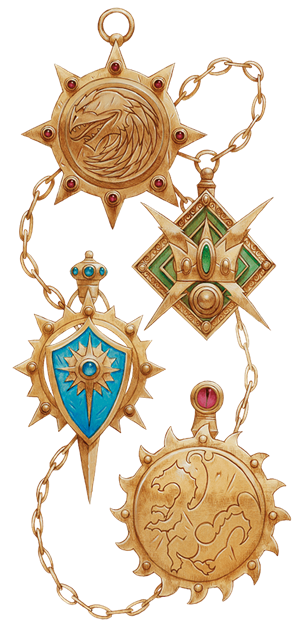 Celebrations are chance for a community to come together and deliver their accolades unto the heroes. Honors, on the other hand, are more personal affairs in which a figure of authority grants a boon to the heroes. Aragorn’s coronation in Return of the King is an honor delivered by a literal angel (in the form of Gandalf, a maiar), perhaps signifying the divine right of kings. The House Cup award at the end of Harry Potter and the Philosopher’s Stone features headmaster Albus Dumbledore honoring each of the heroes individually by awarding them house points for their specific great deeds.
Celebrations are chance for a community to come together and deliver their accolades unto the heroes. Honors, on the other hand, are more personal affairs in which a figure of authority grants a boon to the heroes. Aragorn’s coronation in Return of the King is an honor delivered by a literal angel (in the form of Gandalf, a maiar), perhaps signifying the divine right of kings. The House Cup award at the end of Harry Potter and the Philosopher’s Stone features headmaster Albus Dumbledore honoring each of the heroes individually by awarding them house points for their specific great deeds.
Boons can be physical, such as Arthur receiving Excalibur from the Lady of the Lake, or they can be immaterial, such as a great artist being knighted by the Queen of England in modern times. Sometimes they’re both. In the famous throne room scene at the end of Star Wars, Leia gives physical medals to Luke and Han as symbols of the honor they’ve earned in the eyes of the Rebel Alliance and the galaxy at large.
If you want to give your characters rewards with in-game value, even though the campaign is probably coming to an end, chapter 7 of the Dungeon Master’s Guide is filled with great magic item rewards, but it’s also a resource for intangible rewards like Supernatural Gifts and Marks of Prestige. If the characters do a great deed for a deity, such as Perseus delivering Athena the head of Medusa, they might receive a blessing or a charm in reward. Similarly, nobles and monarchs indebted to the characters might offer a mark of prestige. A letter of recommendation from King Bertram Dwendal in the Critical Role setting of Wildemount would be more than enough to ensure a gifted spellcaster is accepted into the Soltryce Academy of magic, and a noble title would ensure that a hero would live in comfort for the rest of their days.
Retirement
Finally, a hero who has vanquished evil and been showered with glory and fortune has a choice. They can continue adventuring, seeking greater challenges to overcome and possibly dying in the process, or settling down and retiring. Some warriors see no glory in death unless it is on the battlefield, and refuse to retire. Others, like Samwise Gamgee, were reluctant heroes from the start. He constantly felt the tug of home throughout his journey, and his greatest reward was to return home with his lifelong friend Frodo and marry his sweetheart, Rosie. (Though ultimately, after Rosie passed, Sam too journeyed to the Undying Lands to reunite with Frodo.)
Some players just want a happy, peaceful ending. It’s a promise that, after all the hardship of life has been completed, there is comfort and rest awaiting them at the end.
Sometimes characters can come out of retirement for one last adventure, too. Bilbo Baggins retired after the events of The Hobbit, but his wanderlust drove him to travel to Rivendell in The Fellowship of the Ring, and he ultimately received a peaceful end in the Undying Lands after the War of the Ring. So don't stress too much about retiring a character. If you really want them back, there's plenty of precedent for them coming back to fight again, a little older, a little slower, and a little wiser.
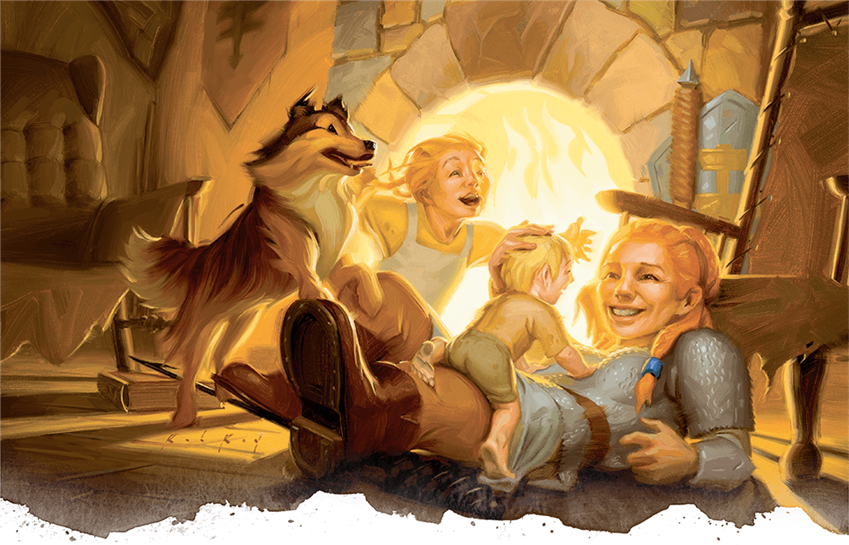
The Last Word
As with everything in D&D, a satisfying ending to your campaign comes down to communication. If you’re the DM, talk with your players about what they want for their characters, and help them achieve their desires or at least resolve their stories by the end. If you’re a player, communicate these things to your DM, and see if you can work together to achieve the ending you’re hoping for.
Create A Brand-New Adventurer Acquire New Powers and Adventures Browse All Your D&D Content
 James Haeck is the lead writer for D&D Beyond, the co-author of Waterdeep: Dragon Heist, Baldur's Gate: Descent into Avernus, and the Critical Role Explorer's Guide to Wildemount, a member of the Guild Adepts, and a freelance writer for Wizards of the Coast, the D&D Adventurers League, and other RPG companies. He lives in Seattle, Washington with his fiancée Hannah and their animal companions Mei and Marzipan. You can find him wasting time on Twitter at @jamesjhaeck.
James Haeck is the lead writer for D&D Beyond, the co-author of Waterdeep: Dragon Heist, Baldur's Gate: Descent into Avernus, and the Critical Role Explorer's Guide to Wildemount, a member of the Guild Adepts, and a freelance writer for Wizards of the Coast, the D&D Adventurers League, and other RPG companies. He lives in Seattle, Washington with his fiancée Hannah and their animal companions Mei and Marzipan. You can find him wasting time on Twitter at @jamesjhaeck.








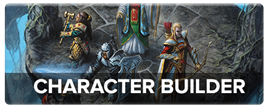
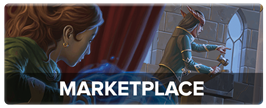
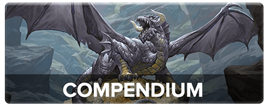
-
View User Profile
-
Send Message
Posted Jan 16, 2019I ran ToA last year, and I'm currently running Dragon Heist - half the group are returning players. (It's not like the other half hated me or anything, they just moved.)
So one thing I've done is had characters from the last campaign gain second-hand recognition. The bard? He's famous. The monk? He brews a beer that's available in Waterdeep taverns (wink). I like making their stories endure.
-
View User Profile
-
Send Message
Posted Jan 16, 2019"four distinct endings": lists six...
-
View User Profile
-
Send Message
Posted Jan 16, 2019Cool
-
View User Profile
-
Send Message
Posted Jan 16, 2019Thanks! I'm a beginner dungeon master and these tips really help me not disappoint my group!
-
View User Profile
-
Send Message
Posted Jan 16, 2019I love having past PCs show up as NPCs in later campaigns oftentimes as benefactors to the characters. My players always like seeing how their old charcters have grown, but I always try to stay true to their interpretation of the character. This was a really great article and will really help w the conclusion to my Waterdeep campaign. Great work!
-
View User Profile
-
Send Message
Posted Jan 16, 2019Really lovely article, James. Well done. I will draw on these ideas the next time I end a campaign.
-
View User Profile
-
Send Message
Posted Jan 17, 2019Rotflol🤣
-
View User Profile
-
Send Message
Posted Jan 17, 2019I'll keep it in mind. Thanks!
-
View User Profile
-
Send Message
Posted Jan 17, 2019This is interesting James, thank you for the read.
I'm curious though, if you have any opinions on making the players feel the same satisfaction of being heroes... before the end of the campaign. Take Tomb of Annihilation that you reference perhaps. If the DM and players want to continue the stories of those characters, going onto other conflicts and bigger, badder things, would you already have them hailed as heroes and celebrated after ending the death curse? Would they never pay for a drink again, and be recognized everywhere they go?
-
View User Profile
-
Send Message
Posted Jan 17, 2019Great article. Thank you very much, sir. I love your work. Especially the encounters, like that one with the unicorn.
-
View User Profile
-
Send Message
Posted Jan 17, 2019Great example of ending a D&D campaign would be from Critical Role's 1st campaign ending, where the DM described what happened in the city Vox Machina saved, and then the players got to explain what happened individually to their characters afterwards. I only hope that my campaign's ending will be so epic...
-
View User Profile
-
Send Message
Posted Jan 17, 2019This is super lovely, FYI!
-
View User Profile
-
Send Message
Posted Jan 17, 2019Agreed. As a DM the entire game needs to be described to the players to make the game feel like an accomplishment. The ending is the most satisfying part...I have a 2 year running campaign where the players have had three sets of heroes from level 1-16(will be 20) and every 8 levels the old characters succeeded in vanquishing the big bad end game only to become or create the plot or villin for the next story piece...the PCs all appear as NPCs and its been great fleshing their stories and having the players feel like their bad ass characters are legendary heroes and mentors now. Fun stuff, even managed to somehow turn the world upside down at their last big boss(previous party 8-15 levels) and now we playing new rolled players(16-20) in a cataclysmic wasteland of the forgotten realms setting with ravnica homebrew elements... Players learned don't mess with the planes, just don't....
-
View User Profile
-
Send Message
Posted Jan 17, 2019I won't need this until like 4 years have passed, but thank you in long, long advance.
-
View User Profile
-
Send Message
Posted Jan 17, 2019I am totally agree with you James. DM’s first and foremost job is entertaining his/her players. If the mission is so dangerous and perilous, the PCs who completed it must be praised properly.
-
View User Profile
-
Send Message
Posted Jan 18, 2019Another great article James!
-
View User Profile
-
Send Message
Posted Jan 18, 2019I do like that Tomb of Annihilation has a number of NPCs who are around to witness the characters' triumph. (Even after Acererak's defeat, there's an opportunity for the PCs to rescue a well-regarded NPC who would spread tales of the PCs' heroism throughout the Realms.)
-
View User Profile
-
Send Message
Posted Jan 19, 2019I always find the celebrations at the end of Asterix comics to be satisfying, as well :) Very well-written article, and even though we haven't even begun our most recent campaign, I'm sure some of these ideas will be fruitful!
-
View User Profile
-
Send Message
Posted Jan 19, 2019Good stuff, right there.
-
View User Profile
-
Send Message
Posted Jan 19, 2019Phew, if I ever DM, this is a lot to keep in mind. This is awesome section though. However, when does Sam go to the Undying lands? I've red the books, and seen the movies, and I don't remember that. Nevertheless, thanks for the advice.
spiderking23
King of Arachnia, Varda, and Shadow.